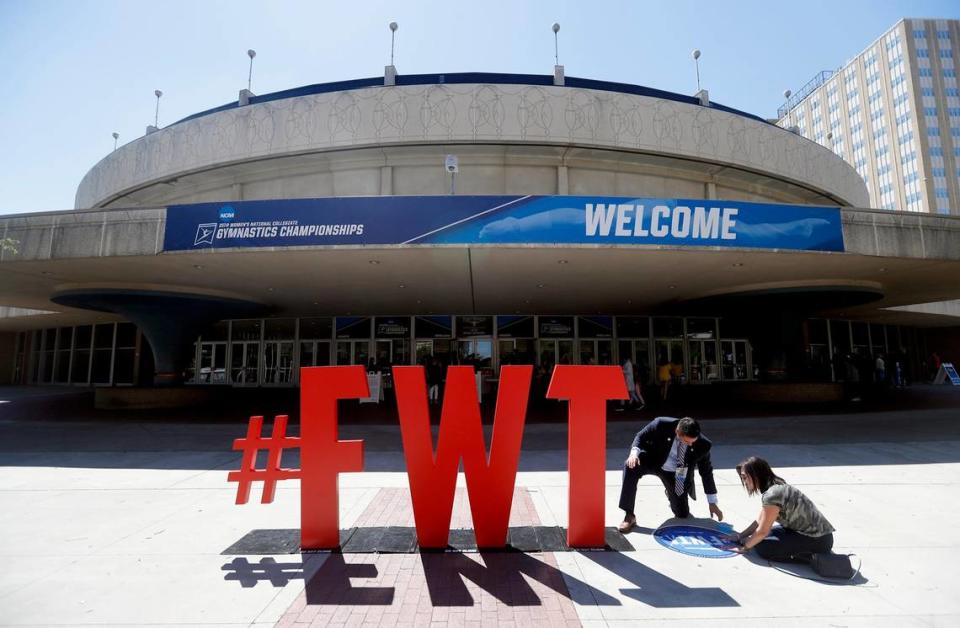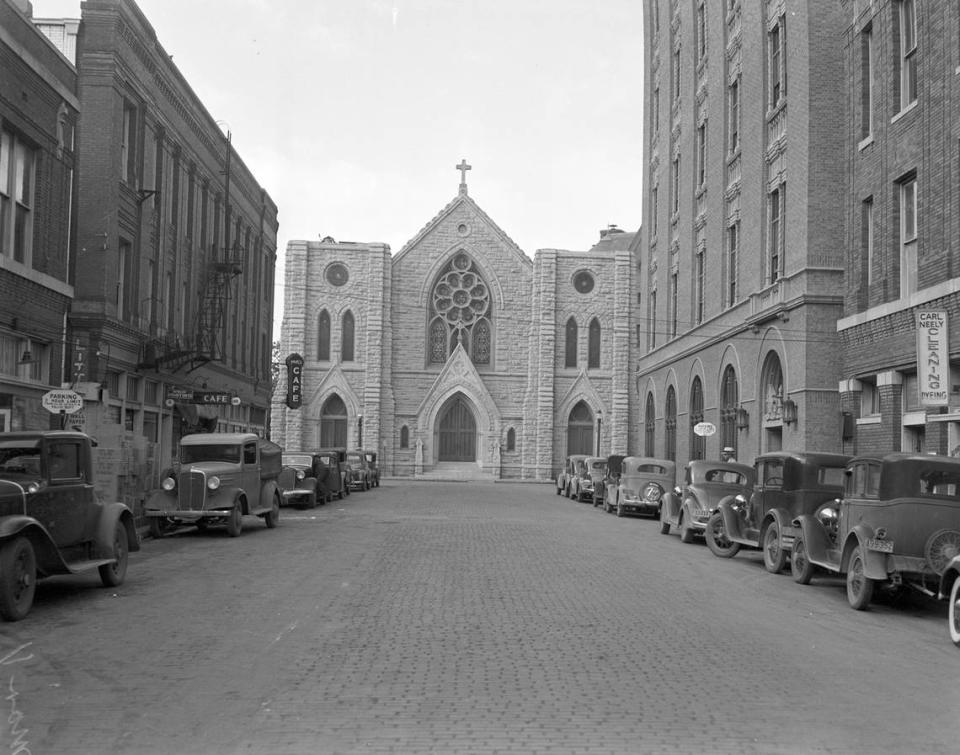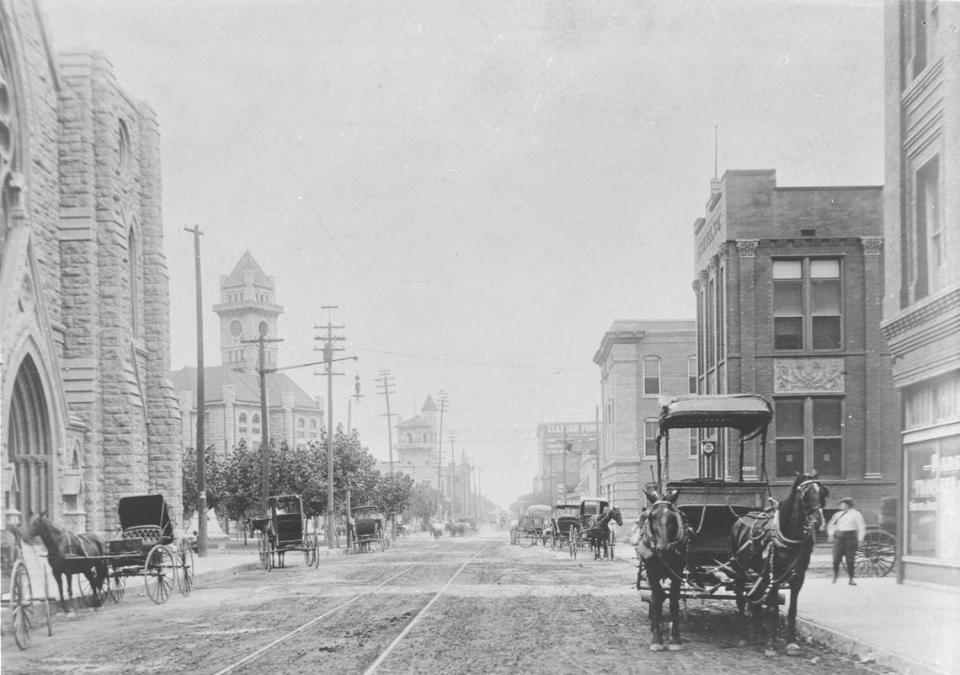Sex, gambling secured Fort Worth’s Wild West reputation through lore of Hell’s Half Acre
Our Uniquely Fort Worth stories celebrate what we love most about Cowtown, its history & culture. Story suggestion? Editors@star-telegram.com.
Fort Worth’s reputation as the old Wild West largely stems from its dark and sinful history.
It was once home to a red light district where brothels, gambling parlors and unsavory characters not only congregated, but thrived.
All things immoral happened on the south end of town — “Where the liquor and the women were both cheap and life was short,” wrote Fort Worth historian and author Richard Selcer.
This was Hell’s Half Acre.
Its vices were eventually shut down and covered with what we know as the Fort Worth Convention Center today.
“Still, the city had a love-hate relationship with ‘the Acre’ because it was also a cash cow, a mixture of commercial properties and private houses taken over for nefarious purposes,” Selcer wrote in an article for the Star-Telegram.
Illegal activities in the Acre earned big money, which flowed back into Fort Worth’s economy.
Earlier this year, recently published census numbers proclaimed Fort Worth’s rightful place among the nation’s sizable cities, making it the 12th largest.
Fort Worth Mayor Mattie Parker said, “Without the right balance of public safety, cities fall apart, but not in Fort Worth.”
Yet, this vision of pistol-toting gunslingers duking it out on muddy streets continues to haunt the city. The Acre’s vices made a huge impact, despite the city’s efforts to clean up.
Selcer said all the debauchery of the Acre began in the 1870’s when the cattle trail came to the south end of Fort Worth. Houses of ill-repute and gambling dens followed the cowpokes the same way they drove their herds.
It was a match made for hell.

⚡ More trending stories from our newsroom:
→ ‘The whole sky was on fire’: Fort Worth friends heartbroken, homeless amid Ruidoso blaze
→ How much does it pay to be a Dallas Cowboys cheerleader?
Where exactly was Fort Worth’s Hell’s Half Acre?
Hell’s Half Acre was generally believed to be bounded by Throckmorton, Jones, and Lancaster streets, from 9th to 15th Streets, which intersected with Houston, Main, and Rusk (now Commerce).
Its vices catered to cowboys, railroad workers, and businessmen looking for adult entertainment and pleasure.
“The Acre had a variety of saloons, bordellos, dance halls and gambling joints. The heart of it was on the east side at the intersection of Rusk and 12th Street. Every corner had one of those establishments,” Selcer said.
Parlor houses were at the upper end and cribs, one room shacks rented by the day for prostitution, were at the lower end. Prostitutes in the Acre charged $5 to 10 at the parlor houses, $1 at the brothels, and 25 cents for a good time at the cribs.


Did a notorious gunfight really happen in Fort Worth’s Hell’s Half Acre?
The St. Patrick Cathedral, a parish of the Diocese of Fort Worth, bordered the Acre district.
“One of the stories is that the father used to stand out on the steps on Sunday mornings and invite people going home from a night at the acre to come worship at mass,” Selcer said.
Butch Cassidy, Sam Bass, Eugene Bunch, and the Sundance Kid are among the outlaws who are known to have spent time in Hell’s Half Acre, according to Texas History. It was also visited by well-known gamblers Bat Masterson, Wyatt Earp, and Luke Short.
A frequently told story about the Acre is of the notorious gun fight between Short and city general Jim Courtright. Legend has it that Courtright confronted Short over unpaid extortion money, sparking a gunfight that ended in Courtright’s death outside the White Elephant Saloon.
But Selcer says the White Elephant saloon was never in the Acre because it was considered upscale.
“In Hell’s Half Acre there was no discrimination, the customers were all cowboys or poor people, there was no keeping out the riff raff because all the saloons down there were the riffraff,” he said.
There was racial division, however, since Hell’s Half Acre was the bad, poor end of town. Establishments were white and black people weren’t allowed in, Selcer said.
“Because that was the poor end of town, the black community in Fort Worth grew up there and they were on the edge of the Acre,” the historian explained. “White cowboys and white men could go over to the black section to visit those saloons and whorehouses but it was a one way street. No black man could go to a white saloon in the Acre, no matter how sleazy or dirty it was.”
How Fort Worth’s Hell’s Half Acre came crumbling down
Frustration with the Acre’s reputation was evident, even though it contributed to Fort Worth’s rise to fame. Local leader’s and preachers like John Franklyn Norris made many efforts to get property owners in the Acre to shut down.
“Norris preached about the poor benighted people that were taken advantage of in Hell’s Half Acre,” Selcer said. “One of the legends is he even brought in some of the prostitutes and set them up in the front of the church then preached about how mistreated they were.”
In 1911, Selcer said Norris openly declared war “on the purveyors of alcohol and those who owned property” in Hell’s Half Acre. Arguments ensued as he blamed his critics after his house mysteriously burned down.
Efforts to shut down the Acre were unsuccessful until 1917. Norris’s attempts gained power when the U.S Army came to town.
“The US Army came in and built Camp Bowie on the west side of Fort Worth and they wanted to protect the soldiers who were training out there,” Selcer said. “It’s one thing to train soldiers and send them off to die on the battlefield, but you don’t want them corrupted by whorehouses and saloons in Hell’s Half Acre. So they targeted it. “
Hell’s Half Acre was officially shut down between 1919 and 1920. Selcer said the army drove the businesses out with evictions and mass arrests.
“They drove businesses that mattered, like the saloon owners, out of Hell’s Half Acre by harassing them and arresting the prostitutes. By 1918 saloons were outlawed through federal amendment so that took care of the legal ones and the arrests made people scatter around town into the suburbs,” he said.
From there the Acre became the slums until it was eventually unidentifiable. Selcer said, “You could no longer say it starts here and ends there and if you go there you’re looking for trouble.”
The Fort Worth Convention Center and Water Gardens were built on top of the area where the Acre once was. Its stories live on through various markers in downtown and walking tours.

